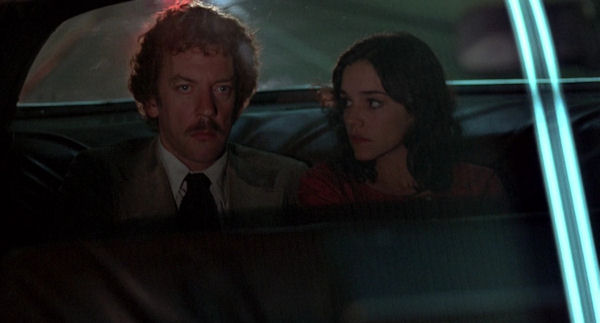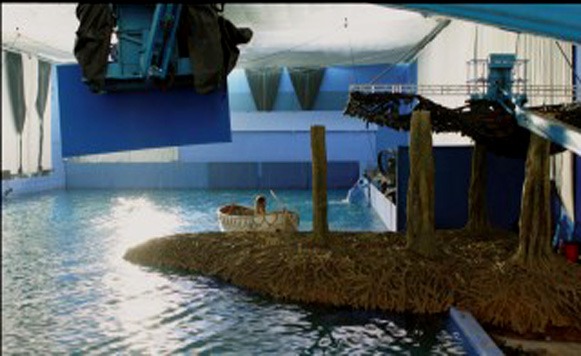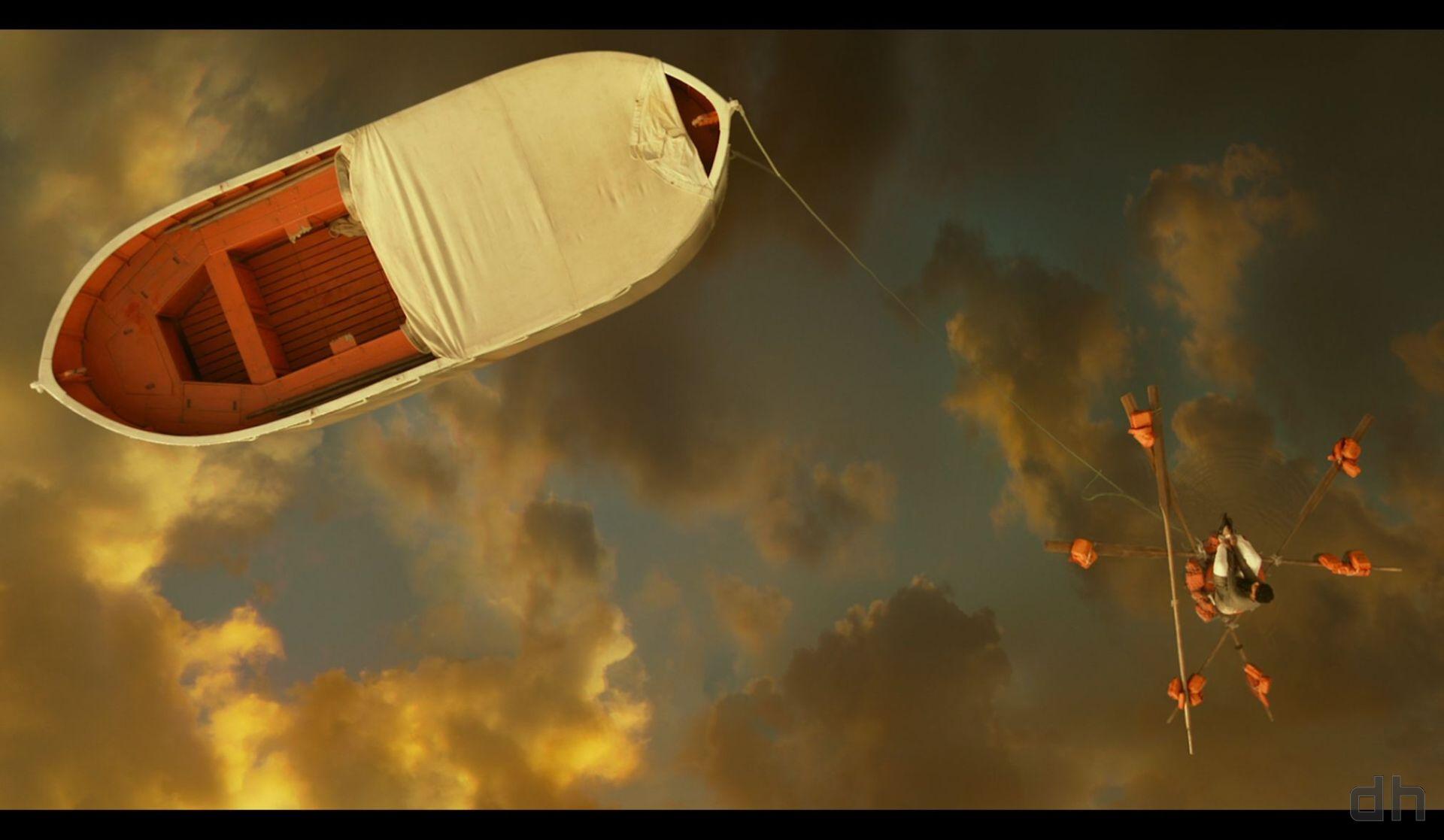Miguel_Angel
Miembro habitual
Respuesta: Fotografía Cinematográfica
Como mola!
Como mola!
Follow along with the video below to see how to install our site as a web app on your home screen.
Se debe tener en cuenta: This feature may not be available in some browsers.


StudioDaily: I wanted to ask you first about Life of Pi, because after you won the Oscar — and congratulations on the Oscar! — there was some grumbling about the cinematographer on a big VFX film winning the Academy Award, as if the cinematographer weren't responsible for the look a film that's heavy on VFX shots. You probably heard some of that grumbling. Could you talk a little about what it takes for you to set a look on a film like this, and how you work with VFX to ensure that it's carried through?
Claudio Miranda: Well, many DPs out there probably don't see it through to the end, and some people make that assumption. But I spent three months on the film with Rhythm & Hues. And when we're on the set, in the tank, we're looking at the cloud references we have in front of us, as far as what the background is going to be. And Ang shows me watercolor paintings of what the feeling is going to be like, and I liked the watercolors we were referencing. And VFX puts their chrome balls and their grey balls up to extract the lighting from the set. We're all in agreement on what the goal is and what we're lighting for — at least the initial intent. We might bend some things in the DI to make it more gold or less gold, and have little variations in color, but we have an idea of where it's going to be from the very beginning. I went over to Rhythm & Hues and made sure the lighting was matching the background, and Bill [Westenhofer, VFX supervisor at R&H] and I talked back and forth about it. It's not like VFX is running on their own. Ang is there as well. And if you're working on a movie of any size, there are always VFX reviews with the director involved. Everything fits.
Cinematographer Claudio Miranda on Oblivion and Life of Pi
Shooting by Candlelight, Lighting by Projection-Screen, and Earning That Oscar
By Bryant Frazer
Studio Daily, Apr 4, 2013
StudioDaily: I wanted to ask you first about Life of Pi, because after you won the Oscar — and congratulations on the Oscar! — there was some grumbling about the cinematographer on a big VFX film winning the Academy Award, as if the cinematographer weren't responsible for the look a film that's heavy on VFX shots. You probably heard some of that grumbling. Could you talk a little about what it takes for you to set a look on a film like this, and how you work with VFX to ensure that it's carried through?
Claudio Miranda: Well, many DPs out there probably don't see it through to the end, and some people make that assumption. But I spent three months on the film with Rhythm & Hues. And when we're on the set, in the tank, we're looking at the cloud references we have in front of us, as far as what the background is going to be. And Ang shows me watercolor paintings of what the feeling is going to be like, and I liked the watercolors we were referencing. And VFX puts their chrome balls and their grey balls up to extract the lighting from the set. We're all in agreement on what the goal is and what we're lighting for — at least the initial intent. We might bend some things in the DI to make it more gold or less gold, and have little variations in color, but we have an idea of where it's going to be from the very beginning. I went over to Rhythm & Hues and made sure the lighting was matching the background, and Bill [Westenhofer, VFX supervisor at R&H] and I talked back and forth about it. It's not like VFX is running on their own. Ang is there as well. And if you're working on a movie of any size, there are always VFX reviews with the director involved. Everything fits.

 ... a que niveles se esta prostituyendo la peña, no me extraña el cabreo de Doyle.
... a que niveles se esta prostituyendo la peña, no me extraña el cabreo de Doyle.La pataleta de Doyle es un episodio absolutamente bochornoso, hombre. La ridícula soflama prejuiciosa, retrógrada y snob de un artesano en el sentido más peyorativo y pequeñoburgués del término, no de un artista.
Resulta que la fotografía tuvo que soportar en sus comienzos el desdén de los "artistas verdaderos y puros" como como se consideraban a sí mismos los pintores y escultores (por lo general, de lo más decadentes) y ahora hay que aceptar sin rechistar cómo se cambian las tornas. Hay que ser muy ignorante o desmemoriado para hablar de la “pureza” o de la “degeneración” del arte como se hacía en los regímenes fascistas o comunistas más totalitarios. Y más desde una posición artística subordinada a la decisión de un director.
Pues no. El sitio de todos estos artesanos endiosados, practicantes de vudú, como los llama Fincher, que se resisten a los avances técnicos porque no saben diferenciar la técnica del talento, está en un buen mausoleo.
Si de algo peca Miranda en su respuesta es de diplomacia.
Otra cosa es que tengamos que crear un nuevo puesto o una nueva terminologia en donde el dire de foto queda relegado por un ¨supervisor estetico de la pelicula¨ que es adonde yo voy... si los tiempos cambian y el rol cambia y ya no se tienen las mismas responsabilidades (bien porque se comparten o bien porque hay que meter 200 planos con efectos y tú no tienes ni idea) pues entonces habrá que cambiar el concepto, las responsabilidades y el organigrama.
when we're on the set, in the tank, we're looking at the cloud references we have in front of us, as far as what the background is going to be. And Ang shows me watercolor paintings of what the feeling is going to be like, and I liked the watercolors we were referencing. And VFX puts their chrome balls and their grey balls up to extract the lighting from the set. We're all in agreement on what the goal is and what we're lighting for — at least the initial intent. We might bend some things in the DI to make it more gold or less gold, and have little variations in color, but we have an idea of where it's going to be from the very beginning.










En cuanto a la expresión peyorativa "salvapantallas" que tanto utilizas últimamente, Nacho, no sé muy bien a qué te refieres, porque un salvapantallas es un programa de ordenador que genera o presenta imágenes aleatorias para no quemar la pantalla. Si te refieres al "fondo de pantalla", puede ser cualquier tipo de imágenes, pero en el 90% de los casos suelen ser fotografías "de postal", no imágenes generadas por ordenador.
Yo creo que Nacho se refiere por "salvapantallas" a imagenes preciosistas que se buscan sin tener nexo o justificacion con lo narrado solo por el mero hecho de buscar el impacto visual
En cuanto a lo de que Miranda haya estado subordinado al supervisor de efectos visuales, no me lo creo. El supervisor de efectos especiales no decide el acabado visual de sus escenas.
Y de las imágenes que has puesto, por ejemplo, ésta:
¿Qué tiene de raro o de malo? Es el salto de una ballena en medio de un banco de plankton y medusas luminiscentes, de noche. Un imagen totalmente realista pero imposible de conseguir de otra forma que no sea CGI. ¿Propones alguna alternativa?
¿Puedes citar o numerar cuánto consideras que es últimamente y en relación a quién he utilizado la palabra "Salvapantallas"? Que por cierto, sé muy bien lo que es uno, y empleo la palabra en este caso para expresar lo que tan bien ha reflejado Lovekraft.
Pues precisamente es así, porque el supervisor, responsable o persona de efectos es quien marca al director de fotografía sus necesidades técnicas en los cromas: lentes nítidas, aperturas de diafragma óptimas, luz día, un enfoque determinado, unos márgenes de exposición... todo lo necesario para que en post-producción puedan modificar todo lo humanamente modificable si fuera necesario. De ahí que, con este tipo de rodaje de efectos, la libertad creativa se restrinja prácticamente hasta desaparecer. Desaparecida la libertad creativa, muere el arte y queda solo la técnica (exponer es muy fácil, te lo dice el fotómetro, lo complicado es narrar exponiendo, etc).
No tengo nada en contra de esa u otras imágenes generadas por ordenador por completo o con una mínima (insignificante) base real. Pero tú mismo lo has dicho: es CGI. Pues que le den el Oscar correspondiente al señor Miranda, si acaso. O el de "Mejor Trabajo en Equipo". Esa es mi alternativa.
 )
)Harmonica, ¿sabes si este libro merece la pena?.
http://www.blume.net/catalogo/969-direccion-de-fotografia-cinematografica-9788480769877.html
Es que son 26 euros, mucha pasta para comprármelo a ciegas.
Como mola!

 .
.

Harmonica, ¿sabes si este libro merece la pena?.
http://www.blume.net/catalogo/969-direccion-de-fotografia-cinematografica-9788480769877.html
Es que son 26 euros, mucha pasta para comprármelo a ciegas.

Lógicamente, tendrá que haber una cordinación con el equipo de efectos especiales pero de ahí a que este equipo mande más que el director de fotografía a las órdenes del director... sigo sin verlo. De todas formas, el director de fotografía nunca puede tener una libertad creativa absoluta. Está al servicio de un director que le solicita una serie de imágenes imposibles de conseguir de otra forma (razonablemente económica).
